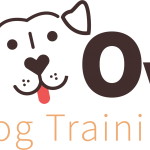What Size Harness For My Dog
Selecting the Right Harness for Your Four-Legged Friend: A Comprehensive Guide
As a dog owner, you want nothing but the best for your furry companion. From choosing the right food to finding the perfect toys, every decision you make is aimed at ensuring that your pup stays healthy and happy. One of the most important decisions you will have to make as a pet parent is selecting the right harness for your dog. With a wide range of options available in the market, choosing the perfect size and fit can be overwhelming. In this article, we will explore everything you need to know about selecting the right harness for your four-legged friend.
Why Choose a Harness Over a Collar?
Before diving into the details of choosing the right harness, let us first understand why a harness may be a better choice than a collar. While collars are suitable for walking dogs who do not pull or tug on their leash, they can cause strain on your dog’s neck and throat if they pull too hard. This can lead to serious injuries such as tracheal collapse or damage to the spinal cord.
A harness distributes the pressure evenly across your dog’s chest and shoulders instead of concentrating it on their neck. This makes it a safer option for dogs who tend to pull on their leash or have respiratory problems.
Types of Harnesses
There are several types of harnesses available in the market, each designed to suit different breeds, sizes, and temperaments of dogs. Let us take a look at some popular types of harnesses:
1. Back-clip Harness: This type of harness has a D-ring attached to its back, making it easy to attach and detach leashes. It is ideal for small dogs or those with short hair.
2. Front-clip Harness: This type of harness has a D-ring attached to its front, making it useful for training dogs who tend to pull on their leash.
3. Dual-clip Harness: As the name suggests, this type of harness has both front and back D-rings, making it versatile for different training situations.
4. No-pull Harness: This type of harness is designed to prevent dogs from pulling on their leash by applying gentle pressure to their chest.
5. Step-in Harness: This type of harness requires your dog to step into it before securing it around their body, making it easy to put on and take off.
6. Vest Harness: This type of harness resembles a vest and is ideal for dogs with respiratory problems or those who need additional support due to injury or illness.
Choosing the Right Size
Now that you know about the different types of harnesses available in the market let us focus on selecting the right size for your dog. A well-fitting harness should be snug enough to prevent your dog from slipping out but not too tight to restrict their movement or breathing.
To measure your dog for a harness, use a measuring tape to determine their girth, which is the widest part of their ribcage, behind their front legs. Once you have obtained this measurement, refer to the sizing chart provided by the manufacturer to select the appropriate size for your dog.
Ensure that you measure your dog regularly as they grow or gain weight over time. An ill-fitting harness can cause discomfort, chaffing and may even lead to injuries if left unaddressed.
Additional Considerations
Apart from choosing the right size and type of harness, there are a few other things that you should consider while selecting a harness for your dog:
1. Material: Select a material that is durable and comfortable for your dog’s skin. Avoid materials that are too rough or stiff as they can cause irritation or chaffing.
2. Visibility: If you walk your dog at night or in low-light conditions, choose a harness with reflective strips or bright colors to ensure maximum visibility.
3. Cleaning: Choose a harness that is easy to clean and maintain. Avoid materials that are prone to staining or require special care.
4. Comfort: Ensure that the harness you choose does not rub against your dog’s skin or cause discomfort in any way. A comfortable harness will make walks more enjoyable for both you and your pup.
Conclusion
Choosing the right harness for your furry friend can be a daunting task, but with the right information and guidance, it can be an enjoyable experience. Remember to consider the type of harness, size, material, visibility, and comfort while making your selection. A well-fitting harness will ensure that your dog stays safe, comfortable, and happy during walks and adventures together. So go ahead, get out there with your pup and enjoy exploring the world around you!



